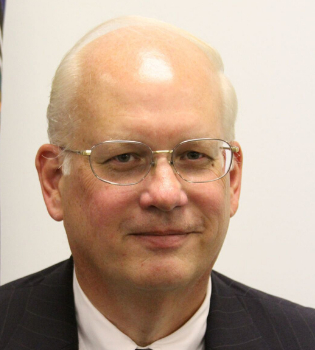Some years back, I ran into a friend, a Virginia Education Association unit chair, outside the General Assembly building, there to lobby on behalf of a state-wide teacher salary increase.
The real problem, I noted, was that across-the-board salary increases didn’t reflect reality, providing, for example, the same increases for hard-to-find physics, chemistry, or special education teachers as it did for those teaching subjects with dozens of applicants for each position. That’s far from the incentive needed to drive qualified professionals into hard-to-staff fields or to schools where educators struggle to teach educationally underserved students.
“I agree with you,” came the reply in a sotto voce voice: “Just don’t tell my members I said that.”
He had whispered the silent part out loud. Across-the-board increases fail to serve students best, but they are important to unions looking to collect more dues. Paying teachers the same with a uniform salary schedule — regardless of skill, subject or instructional challenge – is a disincentive for quality teachers, those with a STEM background, or those with the heart and skill to work in challenged schools.
To be clear: Virginia teacher salaries have lagged many other states for decades. In an effort to catch up, state funding has jumped from $5,840 to $8,200 per student between 2020-2023, with the amount of the state share for teacher compensation increasing 17 percent between FY 2021 and FY 2024. That’s not chump change.
But other states have also increased teacher compensation, not all instructional positions are considered part of the Standards of Quality (and thus not funded), and Virginia’s opaque funding scheme makes it impossible to understand or track what and how state dollars are spent.
Last year’s report by the Joint Legislative Audit and Review Commission (JLARC) on the state’s K-12 funding structure should have been a jumping-off point for reforming Virginia’s Byzantine formula to reflect 21st century needs and demands, empower local school leaders, and redirect funding towards those students harder to teach. It still might become that.
But so far, the report has merely been weaponized by those seeking to spend more money broadly rather than reform the process and improve education while increasing the compensation of quality teachers responsible for teaching our children.
Virginia could start down the road towards both goals. Instead, advocates have focused on merely upping the ante on costs across the board. Legislation now on its way to Governor Glenn Youngkin (SB104 and HB187) requires the Governor, through FY2028, to propose spending the state share of funding necessary to bring teacher salaries up to the national average (but only the one defined by the teachers union). If approved, it demands cumulatively spending $1.5 billion more through FY2028, $664 million of which is to come from local taxes.
My colleague, Steve Haner, a 40-year veteran of General Assembly wars, notes “I can’t remember ever seeing anything like what I read in the bill,” observing “it basically orders the Governor how to propose his budget.” The proposed budget has always outlined every Governor’s vision for Virginia, but letting a Governor, or at least this Governor, do that is a bridge too far for the Left.
Once in their hands, of course, the General Assembly can do what it wants, making this an unserious “feel good bill,” but one with clear downsides. Although Democratic leaders turned down Youngkin’s tax cuts claiming fear of a recession, no such fears exist on the spending side: should a recession come, they would still put Virginia on the hook for spending.
Nor is there any guarantee it will accomplish the goal: localities can spend additional state funds only if they spend the local match. Reliant on property and business gross receipts taxes, will they be willing … or even able … to finance the sudden surge of spending at the local level? For many, already struggling, probably not.
Additionally, the legislation raises the specter of a two-tiered system of education employees: more than 50,000 school system employees are not covered by the proposal. The full load of their 16 percent salary increases will be borne exclusively by local taxpayers, raising costs even higher on localities.
All of these issues, and more, were observed in the JLARC study, but studiously ignored by the bills: the SOQ formula does not adequately account for higher needs students, like special education and English language learners. Nor does it adequately account for local labor costs. Nor for the economies of scale unavailable to smaller school systems. None of that is addressed by an across-the-board increase, and may even exacerbate the problems.
Nor do the bills address what is lacking most in Virginia’s education formula: accountability.
As we’ve written elsewhere, while no one doubts the greater difficulty of educating low-income, highly mobile, Limited English Proficient or disabled students, our funding mechanisms fail to recognize that harder (and more expensive) task. Education dollars flow, not on the basis of students, but on the basis of staffing ratios, special program formulas, and the political savvy of individual school division and school leaders.
Worse, while principals and teachers are held accountable for their results, they have little control over how money is used at their school or in their classroom. How school dollars are spent is decided elsewhere, using complex budgets and allocations that leave educators, parents, and taxpayers in the dark.
This has left Virginia with the worst of all worlds – expenses that can’t be tracked or understood, funds that don’t reach the targeted populations, and an inflexibility both archaic and inefficient in a 21st Century world.
Governor Youngkin has put forth two proposals of long-term significance in this General Assembly session: one was to reform taxes by lowering the income tax and expanding the base of the sales tax. And his appointed Board of Education has endorsed finding a new formula by using the same kind of system used by 34 other states. They offered a balance of ideas both “conservative” and “liberal.”
For his trouble, the Left in the General Assembly has chosen only to consider that which will raise taxes and spending. It’s a dishonest approach to serious problems and leaves already skeptical taxpayers even more cynical. Virginians – especially students and teachers – deserve better.

Chris Braunlich is Senior Advisor and former president of the Thomas Jefferson Institute, which first published this. He served eight years on the Fairfax County School Board and is former president of the Virginia State Board of Education.






